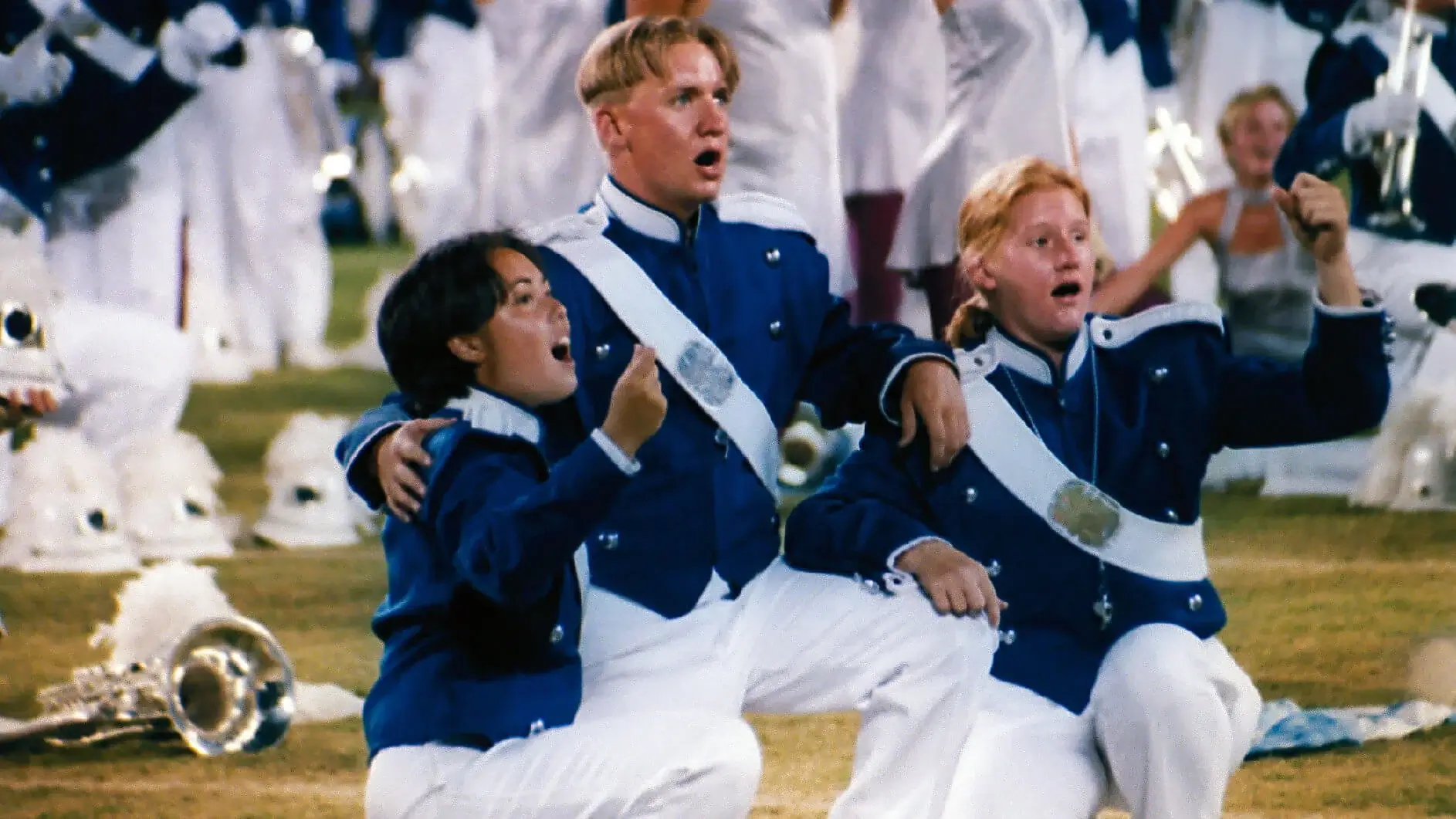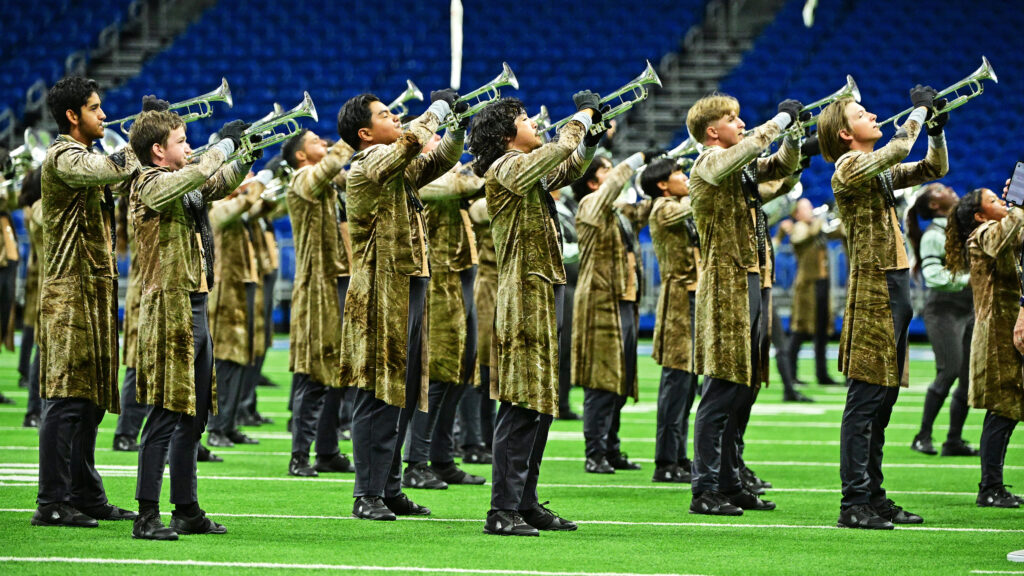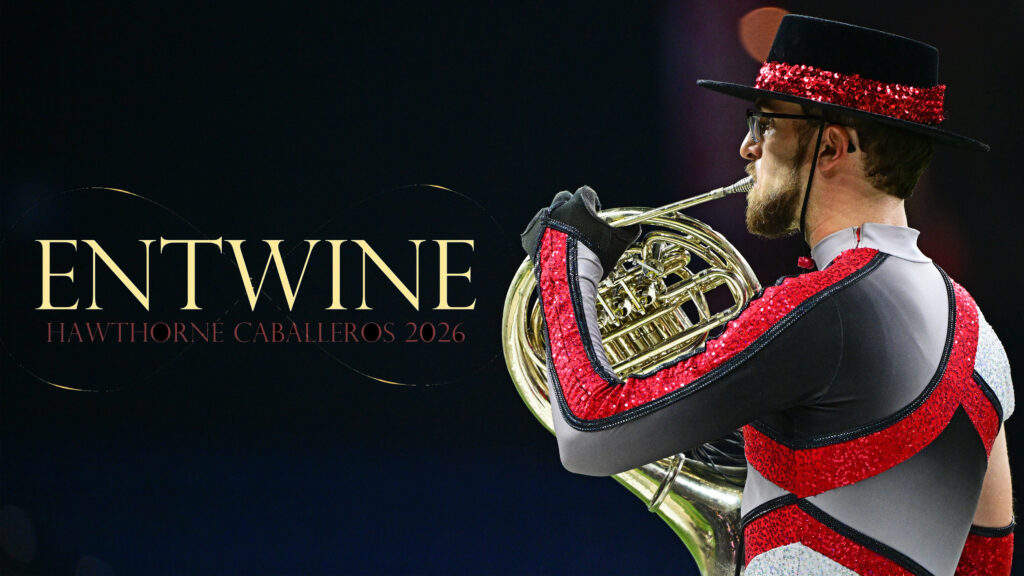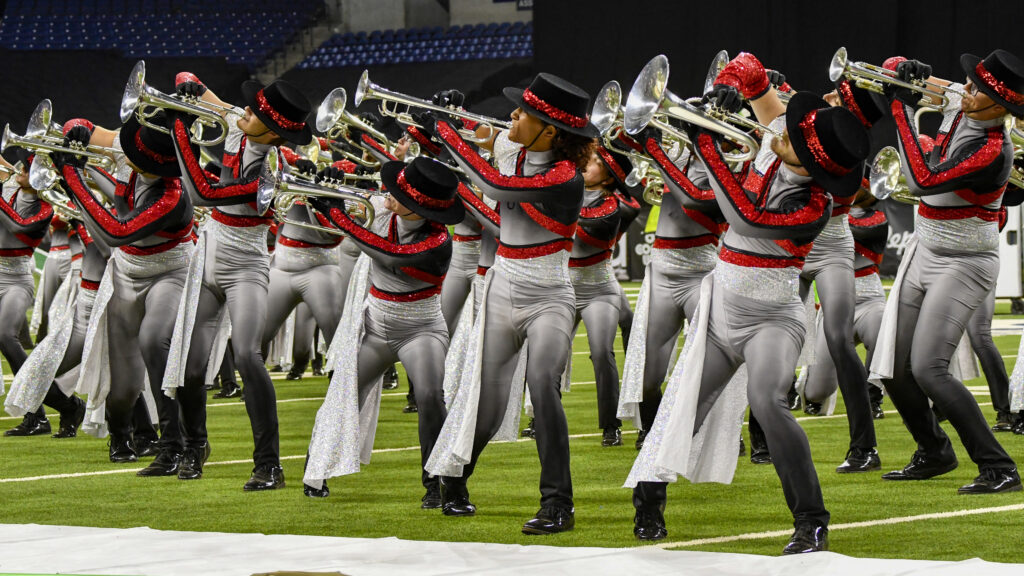The 1996 Drum Corps International Tour was the first of three in a row to end at Orlando’s Citrus Bowl Stadium, with substantial time spent by corps and fans alike at Walt Disney World.
As the season heated up, the Cadets of Bergen County left the DCI Eastern Classic in Allentown, Pennsylvania and hightailed it to Atlanta, where the corps performed for the closing ceremony of the Centennial Summer Olympics before returning to the DCI Tour in New Jersey just three days later.
As the World Championships got underway in Florida, the hometown corps Magic of Orlando tied for eighth place with the Crossmen, and Blue Devils and Phantom Regiment tied for the title, the first time that had happened in DCI’s 25-year history. Regiment had finished fourth in the Quarterfinals competition and third in Semifinals, then peaked at just the right time to claim the corps’ very first gold medal at the DCI Finals.
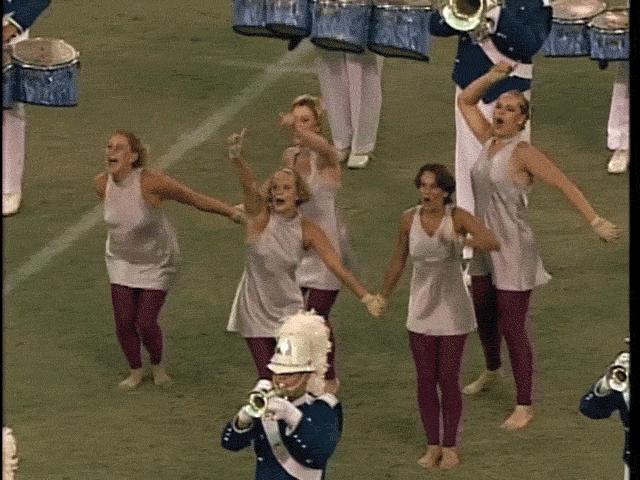
Bluecoats’ seventh-place production titled “American Celebrations,” was based on various commemorations of American holidays.
The show opened as each year does, with a New Year’s countdown to midnight, at the conclusion of which color guard members pretended to throw streamers into the air. The corps played a short rendition of “Auld Lang Syne,” a folk song melody best known for being the tune to which a 1788 poem by Scottish nationalist Robert Burns was set. The song became a New Year’s Eve tradition in America after immigrants from the British Isles brought it to their new country.
Moving on to Valentine’s Day, the corps launched into a tender rendition of “My Funny Valentine,” from the 1937 Broadway musical “Babes in Arms” by Richard Rodgers and lyricist Lorenz Hart, with whom Rodgers worked prior to his storied career with Oscar Hammerstein II. Bluecoats had earlier played this tune and “Johnny One Note” from the same musical in 1989. Rodgers is famed for having won an Emmy, a Grammy, an Oscar, a Tony, and a Pulitzer Prize. He penned such famous musicals as “Oklahoma!,” “Carousel,” “South Pacific,” “The King and I,” and “The Sound of Music.”

Flags depicting a sunrise accompanied a reference to Memorial Day, seen as a color guard member lovingly embraced a triangular-folded American flag of remembrance as “Taps” sounded in the background.
This led into the 4th of July segment, titled “Big Day in Bristol,” inspired by the annual 4th of July parade in Bristol, Rhode Island that attracts more than 200,000 parade goers from around the globe in addition to a number of performing drum corps. Having started in 1785, it is noted as America’s oldest celebration of the holiday. A fanfare of George M. Cohen’s “Yankee Doodle Dandy” came from the vaudeville superstar’s first full-length musical, the 1904 Broadway production of “Little Johnny Jones.”
The corps formed a parade block and marched in the oblique across the center of the field to George Gershwin’s “Strike up the Band” from the 1927 musical political satire of the same name. The tune was accompanied by a squad of rifles, with a reference to the intro of “Stars and Stripes Forever” thrown in for good measure. The segment ended with silks of a greatly simplified American flag, with one large star and a small handful of wavy red and white stripes that gave the impression of the flags flapping in the wind.
Next was Bruce McConnell’s original composition, “Prophet’s Margin,” which honored Labor Day. The clanging sounds of four different sizes of hanging metal plates accompanied a group of labor protesters, some whom defiantly held up mock protest signs as the brass played a cacophonous series of clashing chords. A single faint sunrise flag was run through the horns, representing the new day of hope for labor. Flags emblazoned with mechanical gears ended the work.
The celebration of Christmas started with the mallet keyboard percussionists playing “Christmas Time is Here” by Vince Guaraldi and Lee Mendelson, extracted from the 1965 Peanuts’ special, “A Charlie Brown Christmas.” That short intro led into “Have Yourself a Merry Little Christmas” from the 1944 movie musical “Meet Me in St. Louis,” written by Hugh Martin and Ralph Blane.
The sound of sleigh bells accompanied the work, which was an unusual treatment for a ballad. Metallic blue flags, each with a quarter of a white snowflake, contributed a sense of the frosty nature of the holiday, at least as its experienced in the northern climes. The musical selection ended with a little bit of “Jingle Bells” heard in the front ensemble percussion section.
The show ended as it began, with a reference to New Years and “Auld Lang Syne,” with the corps singing the words, accompanied only by the tuba players laying down a bass line. After the last note of music, each member of the corps tossed New Years streamers into air of a variety of colors. And with that, another year began anew.
1996 Overview

Michael Boo was a member of the Cavaliers from 1975-1977. He wrote about the drum corps activity for more than 35 years while serving as a staff writer for various Drum Corps International projects. During his lifetime Boo wrote for numerous other publications including an honors-winning book on the history of figure skating. He also was an accomplished composer. Boo passed away in 2020 and was inducted into the DCI Hall of Fame posthumously in 2021.


